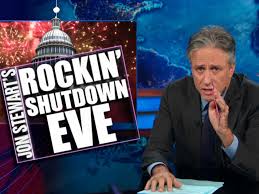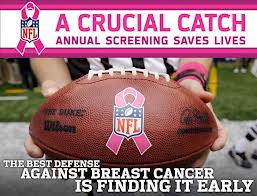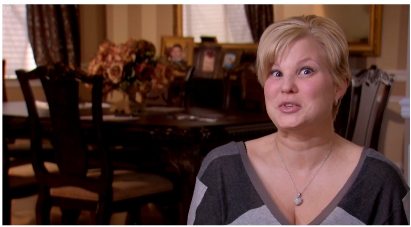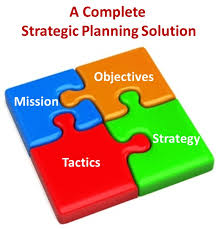 The month of October is brutal for me this year. On top of working with my existing client base, I am attending three different conferences in three different regions to help another client with implementation of a specific training track aimed at executive directors and school superintendents. As I attend these conferences, I see non-profit professionals hopping from session-to-session and find myself wondering, “What is their conference strategy?”
The month of October is brutal for me this year. On top of working with my existing client base, I am attending three different conferences in three different regions to help another client with implementation of a specific training track aimed at executive directors and school superintendents. As I attend these conferences, I see non-profit professionals hopping from session-to-session and find myself wondering, “What is their conference strategy?”
When I was an executive director, I loved attending conferences and trainings. It felt like I was nurturing the inner non-profit professional inside of me. However, after a few years on the job, I found an entire bookshelf in my office full of conference materials and notes. I wasn’t using them. I wasn’t referencing back to them. They were just gathering dust.
The analogy I use to describe this useless activity involves the popular “Abs of Steel” workout DVD, and it goes something like this:
For those of you who know me, you know that I do not possess abs of steel. In fact, I don’t possess anything of steel anywhere on my body. So, if I went to the mall and purchased an Abs of Steel workout DVD, some people might consider that a step in the right direction. This is akin to you deciding to attend a conference or training session.
However, if I came home with my new Abs of Steel workout DVD, popped a tub of buttery popcorn, and watched the DVD while sitting on the couch and eating that popcorn, I would be no closer to my goal of obtaining abs of steel. This is akin to you attending a conference, coming home with a bunch of notes and materials, and putting them on your shelf to collect dust.
The reality of the situation is that you need to do the exercises on the workout DVD in order to achieve the desired result. Of course, the same is true with what you learn at the conference. When you get home, you need to turn your new-found knowledge into action. The act of doing what you learned will build your organizational muscles and grow your organizational capacity.
So, what is your conference abs of steel strategy? Do you have one?
 After a few years of proverbially eating popcorn on the couch after attending conferences and trainings, I decided to do something different. My strategy was simple. Rather than taking notes on what the trainer was saying, I only wrote down action items that came to mind while listening to the speaker.
After a few years of proverbially eating popcorn on the couch after attending conferences and trainings, I decided to do something different. My strategy was simple. Rather than taking notes on what the trainer was saying, I only wrote down action items that came to mind while listening to the speaker.
These were things I planned to transfer to my To Do List when I got home.
I decided that I didn’t need to write down what the trainer was saying because they were most likely handing out copies of their PowerPoint presentation along with a dump truck of materials. Besides, those notes were no good to me if they were just going to sit on my book shelf and collect dust. Right?
I’ll admit that this strategy didn’t always work perfectly. Oftentimes, I’d get home from a conference and my desk was piled high and my To Do List was long. Nevertheless, I found this strategy to be better than the previous one and so I kept it.
I personally liked the “action-focus” of what I was trying to accomplish.
As I facilitate my sessions and sit in my exhibitor booth during the month of October, I can’t help but wonder what are other people’s conference strategies. Are you popping popcorn or are you doing something else? Are you building your organizational muscles or are you just making yourself feel better because you now own the transformational resource?
Please scroll down to the comment box below and share your conference and training strategies. We can all learn from each other.
Here’s to your health!
Erik Anderson
Founder & President, The Healthy Non-Profit LLC
www.thehealthynonprofit.com
erik@thehealthynonprofit.com
http://twitter.com/#!/eanderson847
http://www.facebook.com/eanderson847
http://www.linkedin.com/in/erikanderson847

 Welcome to O.D. Fridays at DonorDreams blog. Every Friday for the foreseeable future we will be looking at posts from John Greco’s blog called “
Welcome to O.D. Fridays at DonorDreams blog. Every Friday for the foreseeable future we will be looking at posts from John Greco’s blog called “ I believe there is a misconception out there about strategic planning because I keep running into executive directors who think just because the current plan is expiring that is must be time to begin work on a new strategic plan. I also oftentimes run into folks who believe it is a perfect time to start planning when their agency is experiencing instability, blurriness, and confusion. In my humble opinion, there is a time and place for strategic planning and embarking on this journey at the wrong time can be at best frustrating and at worst damaging.
I believe there is a misconception out there about strategic planning because I keep running into executive directors who think just because the current plan is expiring that is must be time to begin work on a new strategic plan. I also oftentimes run into folks who believe it is a perfect time to start planning when their agency is experiencing instability, blurriness, and confusion. In my humble opinion, there is a time and place for strategic planning and embarking on this journey at the wrong time can be at best frustrating and at worst damaging. As I had hoped, I found a section titled “Key Questions to Assess Readiness and Capacity”. Here are those questions:
As I had hoped, I found a section titled “Key Questions to Assess Readiness and Capacity”. Here are those questions: We’re not ready, but we still need a plan!
We’re not ready, but we still need a plan! In yesterday’s post titled “
In yesterday’s post titled “ From what I’ve heard and read, many non-profit organizations are concerned about how the government shutdown will impact their funding. Consider the following:
From what I’ve heard and read, many non-profit organizations are concerned about how the government shutdown will impact their funding. Consider the following: In the weeks leading up to the government shutdown, I heard some rumblings via the news media that Senator Ted Cruz and those aligned with him were dragging things out in Congress to maximize their online and direct mail fundraising efforts. To be honest, I didn’t give much thought to those accusations. They sounded like sour grapes and something partisan opponents would say in the heat of the moment. And then . . . when the government actually shut down, I started receiving a flood of email from the Democratic Congressional Campaign Committee (DCCC). This is when my fundraising spidey-sense started to tingle, and I started paying attention because there must be lessons to be learned for non-profit organizations somewhere in this mess.
In the weeks leading up to the government shutdown, I heard some rumblings via the news media that Senator Ted Cruz and those aligned with him were dragging things out in Congress to maximize their online and direct mail fundraising efforts. To be honest, I didn’t give much thought to those accusations. They sounded like sour grapes and something partisan opponents would say in the heat of the moment. And then . . . when the government actually shut down, I started receiving a flood of email from the Democratic Congressional Campaign Committee (DCCC). This is when my fundraising spidey-sense started to tingle, and I started paying attention because there must be lessons to be learned for non-profit organizations somewhere in this mess. Here is what I’m seeing:
Here is what I’m seeing: When crafting your case for support, this is what our friends in the political fundraising world seem to be telling their non-profit cousins:
When crafting your case for support, this is what our friends in the political fundraising world seem to be telling their non-profit cousins: Over the years, I’ve urged non-profit organizations to exercise tremendous caution when contemplating a cause related marketing strategy as part of their resource development plan. There was the December 2012 post titled “
Over the years, I’ve urged non-profit organizations to exercise tremendous caution when contemplating a cause related marketing strategy as part of their resource development plan. There was the December 2012 post titled “
 If you want to know more about this campaign, Forbes magazine’s Alicia Jessop did a nice job in an October 2012 article titled “
If you want to know more about this campaign, Forbes magazine’s Alicia Jessop did a nice job in an October 2012 article titled “ Welcome to O.D. Fridays at DonorDreams blog. Every Friday for the foreseeable future we will be looking at posts from John Greco’s blog called “
Welcome to O.D. Fridays at DonorDreams blog. Every Friday for the foreseeable future we will be looking at posts from John Greco’s blog called “ Welcome to the final post in our five-part series on Governance. We have already discussed the Board’s role in
Welcome to the final post in our five-part series on Governance. We have already discussed the Board’s role in 
 Do you know Jay Love? Of course, you know this gentleman, but you just may not know that you know him. Many non-profit professionals know Jay as the man who innovated the online donor database system known as eTapestry. More recently, you may have heard whispers about a new online CRM product called Bloomerang, which focuses on donor loyalty instead of more transactional metrics found in traditional donor databases. Well, that is Jay’s newest gift to the non-profit sector.
Do you know Jay Love? Of course, you know this gentleman, but you just may not know that you know him. Many non-profit professionals know Jay as the man who innovated the online donor database system known as eTapestry. More recently, you may have heard whispers about a new online CRM product called Bloomerang, which focuses on donor loyalty instead of more transactional metrics found in traditional donor databases. Well, that is Jay’s newest gift to the non-profit sector.
 Welcome to O.D. Fridays at DonorDreams blog. Every Friday for the foreseeable future we will be looking at posts from John Greco’s blog called “
Welcome to O.D. Fridays at DonorDreams blog. Every Friday for the foreseeable future we will be looking at posts from John Greco’s blog called “ John’s first post ever was titled “
John’s first post ever was titled “